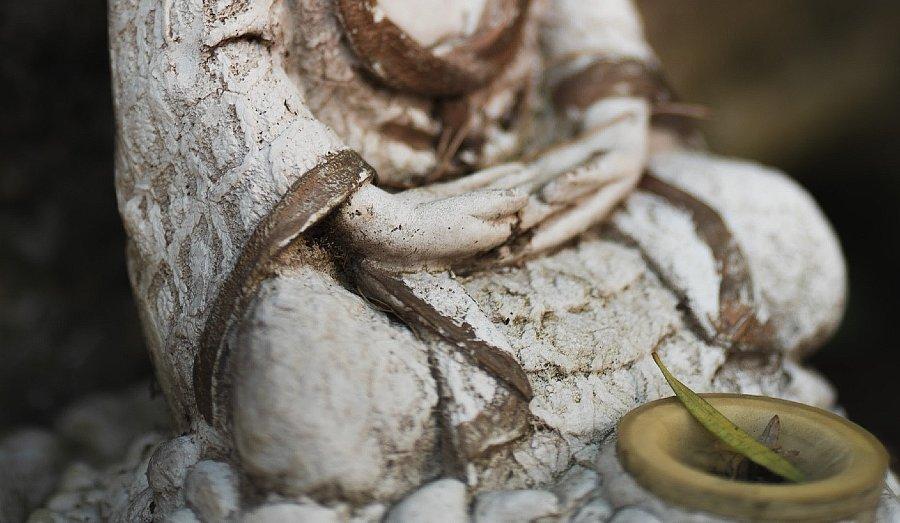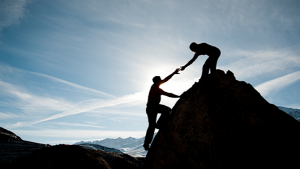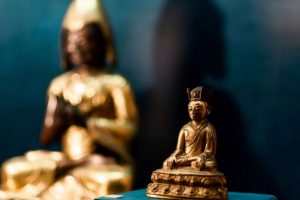
Our brains love repetition and will use any opportunity to slip into autopilot. I am made aware of this every three weeks when I switch my blood glucose sensor—a device used by type 1 diabetics that replaces the finger-pricking method to monitor blood sugar levels—from the top of one arm to the other. The sweeping movement, repeated up to 10 times a day, of taking the smart little meter that communicates via Bluetooth with the sensor out of my pocket, pressing the “scan” button with my right thumb, reaching across and holding it to the little white sensor button under my left sleeve, reading the figure it displays, and putting the meter back is stopped in its track when I have inserted a new sensor on the opposite arm. For a day or so, I will still follow the pathway of movement that has been chiseled into my brain, expecting a response from a sensor that isn’t there. I stare at the illuminated screen of the device and wonder why it stays blank, until the penny drops—of course, it’s now on the other arm. I am quite grateful for these little moments of thwarted expectation because they bring me into the present moment, or at least they make me aware of a lack of awareness. But, soon enough, the new pathway is established, reaching across to the right arm with the left hand, and the action reverts to the below-awareness automatic functioning that governs much of my actions, like turning the page of a book or reaching for the phone.
Being aware, without judgement, of what we are doing while we are doing it, as well as being aware of the many dimensions of experience when we are in a state of repose, lie at the heart of mindful living. Awareness adds luster to our days, opening up choice and improving mental, physical, and planetary health in countless ways, as research has shown effusively. And it seems that a degree of cunning is required to out-maneuver the habit-forming tendency of our organism that tends toward saving energy. Sometimes, unforeseen events and accidents jerk us into presence and sometimes we can create little prompts for ourselves that shake things up in gentler ways. Recently I started using the position of my hands in meditation as a habit breaker.
It was inspired by a visit to a massage therapist to relieve tension in my neck, shoulders, and right elbow. She does “fascia work,” treating the deep soft tissue that connects bones, muscles, and organs. As an artist, she also makes sculptures and seems to have an intuitive grasp of the patterns that shape a person’s body. She pointed out how, as a right-handed person, the right side of my body juts forward, and right enough, when I look at my feet in an unsuspecting standing position, my right foot and hip will be slightly ahead, even if it doesn’t feel that way. While I lay face-up on her massage table, she twisted, stretched, and held my limbs at weird angles while pressing into key places, like the little hollow between collar bone and upper arm bone, which led to a flood of delightfully novel sensations.
After the first treatment, my body felt thoroughly and somewhat disconcertingly re-aligned, which brought with it renewed awareness of physical sensations during familiar movements such as mounting my bicycle or lifting the kettle. I was more aware of how I was sitting in front of my computer, how I was moving the mouse. The therapist had explained that the inward rotation involved in typing and operating the mouse may have led to my “tennis elbow” symptoms. I was quite determined to make a change in these patterns and ordered an ergonomic, upright mouse.
The next time I was meditating, I settled down into my familiar cross-legged position, adjusting a couple of small cushions under my knees, wrapping the soft fleece blanket around my lower body, tucking it in at the back of the waist. Then, in my usual manner, I arranged my hands centrally into a fold of the blanket, one hand into the cup of the other. Having just had the massage, I was very aware of the relationships between my various body parts, the subtle torque in my spine caused by one hip positioned slightly more forward than the other, the pushing and pulling of fascia along the right side of my upper body, and how my hand position actually involved a subtle turning in shoulder, elbow, and wrist joints. There was a sense of the interconnectedness of the whole body, and I became curious whether it would make a difference to the overall system to change which hand was on top of the other.
This was the beginning of a rewarding and ongoing enquiry which I have started to share with my students and now with you. If you are up for a little experiment, without thinking too much about it, if you place your hands into your lap for meditation, which hand will naturally be on top? I imagine this will feel comfortingly familiar. Perhaps close your eyes and enjoy giving yourself a little breathing space. Then change the hand position and place the other one on top. What is that like? A little strange maybe, somehow “not quite right?” Is there some curiosity to stay with the sensations for a little while? Curiosity is such a crucial factor in cultivating mindful states of mind.
Recently, when I invited a group of mindfulness students to place their hands into their laps, one on top of the other ready for meditation, I glanced around to see whether there was a common pattern. And right enough, almost everyone had their right hand on top. I am pretty sure they haven’t been introduced to this as the “correct” way to do it—contemporary mindfulness approaches are usually non-specific about such details. As it happens, in Buddhist tradition, the dhyana mudra does specify the right hand should rest upon the left, and that’s how statues of the Buddha are usually depicted, unless they display a different kind of mudra (hand gesture) altogether. There are some variations, sometimes middle fingers are raised for example; thumbs are touching or not, and in some meditation traditions a different top/down hand position is recommended for men and women. Everything about the posture is usually associated with a meaning. “The top hand symbolizes enlightenment; the bottom hand, the world of appearances. Thus the mudra as a whole suggests the supremacy of the enlightened mind.” (Tricycle)
Some of my own discoveries are centered around the theme of doing and being, the balance between the more active and the more receptive modes of experience, the right and left hemispheres of the brain, the yang and yin of it. The energy in my right, dominant arm and hand is very different from the left side. The right side is stronger, more precise, and tends to hold more tension; the other side is more sensitive, a little vague, and relaxed. The right hand is good at melodies when playing the piano, the left hand excels at accompaniment. When a piece of music asks for the opposite roles, a lot more practice is required—it doesn’t come naturally. But a singing bassline is a wondrous, richly stirring experience—if the right hand can pipe down its supremacy for a while.
Meditation is overall more about accessing the being-mode, and in that dhyana mudra the right hand quite likes to feel cradled by the left (it may be different if you are left-handed.) It feels like an encouragement to let go of goal-orientation against the wider framework of stillness. But the message doesn’t always get through—habitual tensions can easily prevail; a subtle tensing of muscles all along the arm into the shoulder. When I switch to the other position, the right hand underneath, there is an initial period of disorientation, as if roles are put into question. The left hand feels exposed in the foreground and the right hand needs to adjust to being in a more laid-back supportive role. And then I notice something else: my heart starts to feel more vibrant and loving. The right hand now seems to exude compassion which allows the left to come into its own as a vessel of emptiness, of nonconceptual knowing.
As the meditation deepens, the two hands seem to merge and become one. When attention flags or drifts, bringing the mind back to the experience of the hands is a great way to focus and readjust in the playing field of relaxed awareness. Focusing on the hands in this spirit of curiosity seems to be a great way to engage both mind and body in an integrated, non-heady way.
I met one of the students who had participated in that experimental meditation session a week afterwards, and she noted that her awareness of the right-/left-hand dynamic had spilled over into observing herself performing everyday activities such as chopping vegetables with more presence, rather than just getting it done. When taking a shower, she enjoyed giving extra care to washing the dominant arm. I like to think that this kind of meditative focus, experimenting with hand gestures in this way, could lead to shaping our lives in ways that are more mindful, kind, and balanced, with less frenzied doing and less zoning out, and with a greater sense of overall purpose.
See more
Mudra: What Do Buddhist Hand Gestures Mean? (Tricycle)
Related features from BDG
Core of Culture Announces Mudra and the Diamond Spheres, Part 2 Online Lecture Series
Dr. Christian Luczanits to Present Talk on 11 Nov.: “Mudra and the Vajradhatu Mandala of Tabo Assembly Hall.”
Core of Culture Announces Mudra and the Diamond Spheres Free Online Lecture Series
Tyra Kleen: Mudra
Monklife, Part Three: Mantra, Mudra, Movement, Mask – Steps to Embodiment
Mudra: Understanding the Buddha’s Hands












